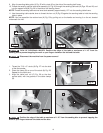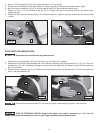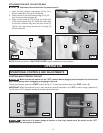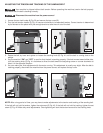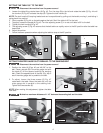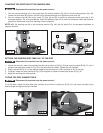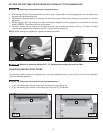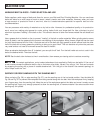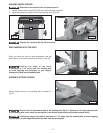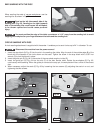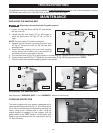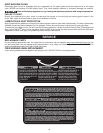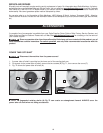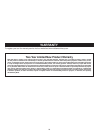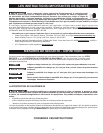
20
MACHINE USE
ABRASIVE BELTS & DISCS - THEIR SELECTION AND USE
Delta supplies a wide range of belts and discs for use on your Belt and Disc Finishing Machine. You can use these
belts and discs for a wide range of work on wood, metals, plastics and other materials. However, when you have
a large amount of production work of one kind, refer to a coated-abrasive specialist for specific belt and disc
recommendations.
You can process a wide variety of materials on a dry belt or disc. However, for professional quality or for production
work, use a low, melting-point grease for cooler cutting, better finish, and longer belt life. Use a lubricant to grind
aluminum to prevent "loading" of the belt or disc. This can also be true of other non-ferrous metals like soft brass and
zinc.
Use a grease stick to the belt or disc to prevent "loading" of the belt on softer materials. When grinding steel or some
kinds of plastic, use the grease stick to prevent over-heating of the workpiece. Many times a single belt can be used
for both stock removal and for finish. Lubricate one-half of the belt with light grease for stock removal and the other
half of the belt with a heavy grease for polishing to bring out a good finish. This can be done only when the parts are
very small and do not have to be moved across the face of the belt.
When an abrasive belt smaller than 6" is desired, you can split the 6" belt. Turn the belt inside out and cut a slot in the
belt at the desired width. Then tear the belt.
NOTE: Tear the belt a few inches at a time in one direction, then reverse your tearing action to reduce unraveling.
For certain applications, a mist coolant attachment (not supplied by Delta) can be helpful. If the use of
a mist coolant causes the abrasive belt to slip on the lower drive pulley, correct it by using a "tire" that can be made
by wrapping the pulley with a piece of coated abrasive belt. Turn the grit to the outside. Use cement sparingly to
avoid lumps under the "tire."
SURFACE OR EDGE SANDING WITH THE SANDING BELT
When surfacing (Fig. 56), or edge sanding (Fig. 57), use the sanding arm in the horizontal position. Use the table (A)
Fig. 56 and Fig. 57 to prevent the workpiece from being carried along with the belt. Hold the workpiece firmly, keeping
your fingers away from the sanding belt. Keep the end of the workpiece against the table and move it evenly across
the sanding belt. Apply only enough pressure to allow the sanding belt to remove material. Use extra caution when
sanding very thin pieces.
Fig. 56
A
Fig. 57
A




